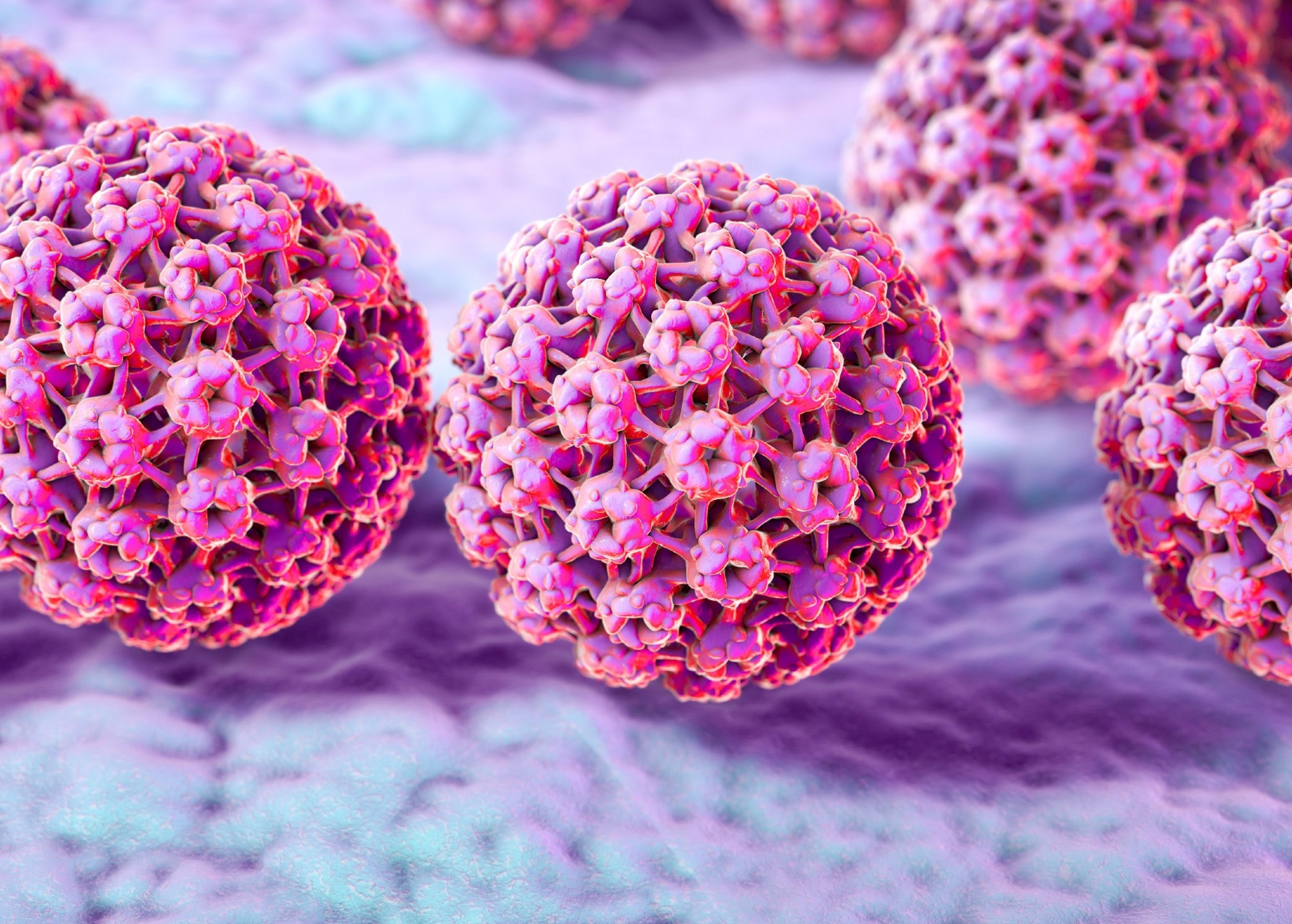In a recent study published in the journal PLOS One, researchers investigated the associations between human papillomavirus (HPV) and metabolic syndrome (MetS) and the impacts of these comorbidities on the all-cause mortality risk of clinically diagnosed HPV and MetS men and women. They used data from seven consecutive data collection cycles of the United States (US) National Health and Nutrition Examination Survey (NHANES), comprising more than 5,100 individuals between the ages of 18 and 65, with follow-up times extending, on average, for nine years following initial HPV and MetS diagnosis.
 Study: Association between human papillomaviruses, metabolic syndrome, and all-cause death; analysis of the U.S. NHANES 2003–2004 to 2015–2016. Image Credit: Kateryna Kon / Shutterstock
Study: Association between human papillomaviruses, metabolic syndrome, and all-cause death; analysis of the U.S. NHANES 2003–2004 to 2015–2016. Image Credit: Kateryna Kon / Shutterstock
Data analyses revealed that, despite HPV (of any type) not displaying direct associations with increased all-cause mortality, coinfections with both HPV (particularly high-risk sub-variants) and MetS were found to substantially increase all-cause mortality risk, especially in women when compared to the no HPV/no MetS sample cohort. This study forms the basis for future research aimed at unraveling the temporal, vaccination status, age, and sex effects of HPV, thereby preparing the road for novel interventions against this increasingly prevalent condition.
HPV, MetS, and their potential associations
Human papillomavirus (HPV) is an umbrella term referring to more than 200 closely related viral strains, which together account for the most prevalent sexually transmitted infection (STI) in the world. Alarmingly, some HPVs have been found to act as carcinogens in a number of malignancies, a concern exacerbated by the lack of a cure for these conditions and the increasing global prevalence of the disease. In the US alone, 20 million patients are estimated to live with the condition, with an additional 5.5 million diagnoses every year.
Of the more than 200 HPVs hitherto identified, approximately 40 sub-variants are known to infect the human genital tract. These sub-variants are ‘risk-classified’ based on their cancer-causing potential into ‘no-,’ ‘low-,’ ‘medium-,’ and ‘high-risk’ HPVs. Apart from their carcinogenic potential, science has hitherto failed to establish any further direct severe clinical outcome from HPV infections. However, previous research suggests that HPV may be associated with numerous comorbidities and coinfections and may adversely exacerbate their outcomes. Despite remaining formally unverified, some studies indicate that HPV comorbidities, in turn, may exert influence on HPV, compounding cancer risk.
One of the most often cited HPV coinfections is metabolic syndrome (MetS), a commonly observed group of cardiovascular conditions including obesity, hypertension, dyslipidemia, and insulin resistance. Frequently a silent condition that may remain undiagnosed for life, MetS has previously been independently associated with increased cardiovascular disease (CVD) risk, including heart attacks and strokes. MetS has been reported to increase the prevalence and persistence of HPV. However, the cumulative impacts of HPV and MetS remain unknown, as are their associations and influences upon each other.
About the study
The present study aims to evaluate the combined impacts of HVP and MetS on all-cause mortality risk across both male and female sexes. Data for the study was obtained from the United States (US) National Health and Nutrition Examination Survey (NHANES), a publicly available, long-term, large cohort population-based study of adult Americans irrespective of age and ethnicity. Participants from the current study were selected such that their ages were in the 18–64-year-old range and with completed datasheets. Data collection included participant sociodemographic and medical histories, uniform dietary questionnaires, and participant laboratory examinations (physical and biospecimen).
The investigated variables were age, ethnicity, sex, education, smoking status (nicotine), and health insurance status. Height and weight data were used to compute each participant’s body mass indices (BMIs). All HPV and MetS diagnoses were clinically verified – the former using vaginal, penile, and oral swabs, and the latter using waist circumference, blood pressure (BP), blood glucose, blood triglycerides, or high-density lipoprotein (HDL)-cholesterol measurements. Simultaneously, both conditions were stratified in terms of cancer risk (HPV) and condition severity (MetS).
Descriptive statistics were used to classify HPV subtypes. Multivariate statistics, both with and without corrections for sociodemographic factors, were used to assess the impacts of clinical and demographic data. Cox proportional hazard ratios were computed to evaluate the joint effects of HPV and MetS on all-cause mortality.
Study findings
Of the 71,058 participants enrolled in the NHANES cohort, 5,101 met the study inclusion criteria and were included in the final analyses. Females comprised 64% of the sample cohort, with women aged 18-24 representing half the total number of identified ‘high-risk HPV’ patients. Surprisingly, males in the same age group, especially those with higher educational qualifications and non-smokers, were the cohort with the most ‘no HPV’ representation.
“Overall, a majority of the sample displayed high-risk HPV (35% males, 31% females) or no HPV (34% males, 34% females). Over an average 9.4 years of follow-up there were 240 all-cause deaths (no HPV: n = 46 deaths; low-risk: n = 60 deaths; probable: n = 37 deaths, and; high-risk: n = 97 deaths). Visual inspection of the survival probability curves is suggestive of lower survival probabilities among the probable-risk and high-risk HPV groups for males (p<0.05), and no clear relationships observed in females (p = 0.97).”
Multivariate statistics reveal that, while no direct association could be made between HPV (irrespective of subtype) and all-cause mortality (no statistical difference between no HPV and HPV cohorts), coinfection with any MetS factor was found to increase adverse cervical cancer outcomes, especially in women substantially.
“In the pooled NHANES sample, HPV types 16 and 18 accounted for approximately 22% and 10% of high-risk HPV, respectively. Consistent with previous literature [30, 31], HPV type 16 was the most common high-risk HPV subtype in both men and women. In this sample, high-risk HPV was highest among females aged 18 to 24 years old, and subsequently decreased with age. By contrast, high-risk HPV tended to increase with age in males.”
Caveats and limitations exist in interpreting these results – the sample is representative of the American population. Differences in health behaviors (especially diets) in other global regions may alter these results for those populations. More importantly, a significant difference in sex-specific HPV screening coverage exists – while all adult American women (and many other nationalities worldwide) are recommended routine HPV screening and vaccination, men are rarely screened. American records highlight this discrepancy – 60% of American women were screened compared to only 42% of men. This may result in an underestimation of male mortality risk, biasing this study’s results. Nevertheless, this study sets the foundation for future work expanding on geographic and demographic factors that may alter HPV cancer risk.
“Future efforts focused on the harmonization of HPV-specific datasets or pooling of subsequent NHANES cycles may allow for broader insight into this question, by examining specific HPV subtypes, highly prevalent high-risk HPV subtypes, and HPV-related cancers. In the intermediate term, further prospective analysis is needed to understand the temporal, age, vaccination, and sex effects of HPV diagnosis on these relationships in studies with more detailed histories of HPV infection and persistence.”
Journal reference:
- Mirzadeh, P., Oye-Somefun, A., Ardern, C. I., & Buick, C. J. (2024). Association between human papillomaviruses, metabolic syndrome, and all-cause death; analysis of the US NHANES 2003–2004 to 2015–2016. PLOS ONE, 19(3), e0299479, DOI – 10.1371/journal.pone.0299479, https://journals.plos.org/plosone/article?id=10.1371/journal.pone.0299479







